Key Takeaways
- Pediatric occupational therapists use sensory integration therapy to help children with SPD process sensory inputs effectively.
- Deep pressure input reduces sensory overload and distress in children suffering from SPD.
- Therapists customize therapy using techniques like swinging, spinning, brushing, and specialized equipment in a sensory gym.
- A sensory diet, tailored to the child’s specific needs, is integrated into daily routines to reinforce progress made during therapy sessions.
- Environmental modifications are implemented to create a sensory-friendly environment, promoting positive sensory experiences and reducing sensory overload.
Understanding Sensory Processing Disorder
Sensory Processing Disorder (SPD) is a complex neurological condition that significantly influences how individuals perceive and respond to sensory stimuli. This disorder is especially noticeable in children, causing either an overreaction (hypersensitivity) or underreaction (hyposensitivity) to sensory input, making everyday activities challenging and distressing.
In many cases, the early signs of SPD stem from an individual’s unique reactions to sensory stimuli. Parents play a crucial role in observing these signs, which, when identified and addressed early, can significantly improve the individual’s quality of life and mitigate potential adverse effects of the disorder.
Occupational therapy is crucial in managing SPD, specifically focusing on improving self-regulation, adaptive skills, and social participation. It helps to enhance the quality of life for individuals with SPD by developing their ability to process sensory information effectively. By utilizing techniques like sensory modulation, therapists can assist individuals in regulating their responses to sensory stimuli.
Sensory integration therapy is one of the primary techniques used in occupational therapy for SPD. This therapy helps individuals with SPD respond appropriately to sensory stimuli by encouraging the brain to process and integrate sensory inputs more organizedly. Other helpful strategies include deep pressure input and environmental modifications, which can help minimize the distress associated with sensory overloads. When implemented correctly, these methods can significantly improve the sensory processing abilities of individuals with SPD, facilitating their engagement in daily activities and social interactions.
Role of Occupational Therapists
The role of occupational therapists in treating sensory processing disorder (SPD) cannot be overstated. These professionals are pivotal in evaluating, diagnosing, and handling SPD in children. They are skilled at detecting sensory issues early and using their expertise to create individualized treatment plans tailored to each child’s needs. This is essential to improving sensory processing abilities, self-regulation, and adaptive skills in children with SPD.
Their methods, which often include sensory integration therapy, deep pressure input, and environmental adjustments, are designed to tackle sensory issues. By recognizing and understanding sensory processing difficulties, occupational therapists set appropriate goals and offer interventions that enhance daily functioning. They work diligently to equip children with the necessary skills to engage in meaningful activities, regulate sensory responses, and create sensory-friendly environments.
Occupational therapists’ ultimate goal is to enhance the social participation of children with SPD. By guiding children to manage their sensory responses effectively, occupational therapists boost their quality of life and nurture their sense of independence. Their role in handling SPD is crucial, allowing children to thrive despite their sensory challenges.
Sensory Integration Therapy
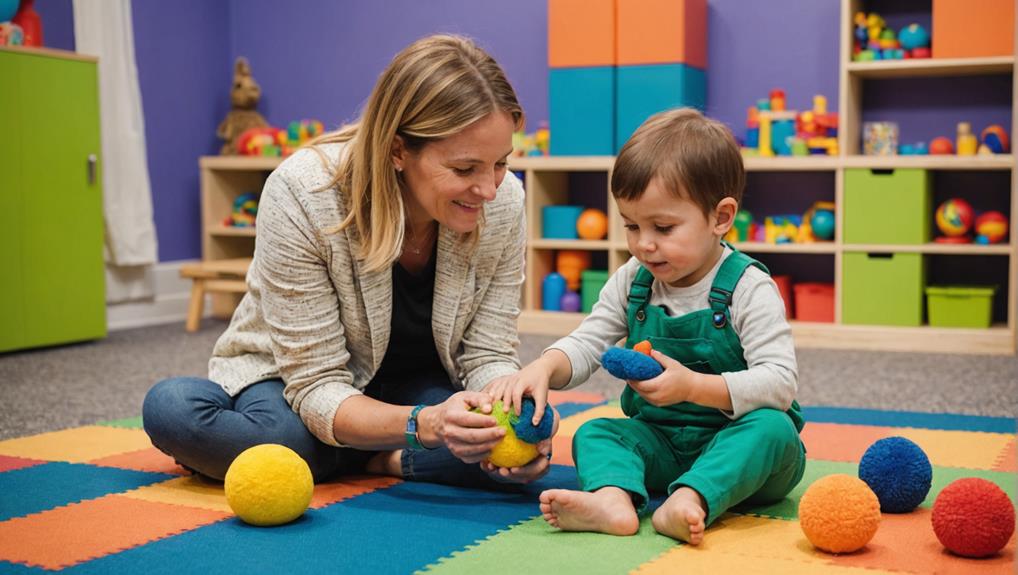
Occupational therapists employ Sensory Integration Therapy to alleviate discomfort in children grappling with sensory issues by blending observation and engagement. The therapy hinges on understanding a child’s sensory needs, determined through meticulous evaluations. These needs can range from tactile to proprioceptive and even vestibular challenges, thus requiring a variety of specialized exercises.
The therapy process usually unfolds in a sensory gym, a dedicated space equipped with tailored tools to balance sensory input. Techniques such as swinging, spinning, and brushing are systematically used to moderate the child’s sensory experiences, creating a safe environment for them to investigate and adapt. Additional activities like balance board challenges and oral-motor exercises may also be included.
A critical aspect of sensory integration therapy is creating a personalized treatment plan. Occupational therapists work diligently to tailor a plan that aligns with the child’s sensory needs, ensuring it is practical and manageable. This plan often includes a sensory diet, a set of individualized activities designed to be carried out at home to reinforce the progress made during therapy sessions.
Sensory integration therapy provides a compassionate, structured, and holistic approach to managing sensory issues in children, enabling them to engage more comfortably with their environment.
Parental Involvement in Therapy
An integral component of sensory integration therapy is the role played by parents in sustaining and supplementing treatment outside the therapeutic environment. Parents are not just spectators but active participants, working with occupational therapists to create a personalized schedule of therapies, known as a sensory diet, tailored to their child’s distinct needs.
This involves implementing diverse sensory activities, such as vestibular coordination improvements and auditory sensory exercises, that can help enhance body awareness and sensory processing abilities. Such activities can be integrated into the child’s daily routine, fostering a sense of normalcy and ease.
This collaborative approach ensures a consistent treatment plan, boosting the effectiveness of therapies administered during sessions with the occupational therapist. Parents are trained to understand their child’s sensory experiences, enabling them to effectively implement the sensory diet at home and manage emerging challenges.
Furthermore, parents can amplify the impact of therapy by creating a sensory-friendly environment at home. This environment, designed with their child’s sensory preferences in mind, can notably reduce sensory overload and promote positive sensory experiences. It can include diverse elements, such as specific textures, calming colors, or a quiet space for rest.
Evaluations for Sensory Issues
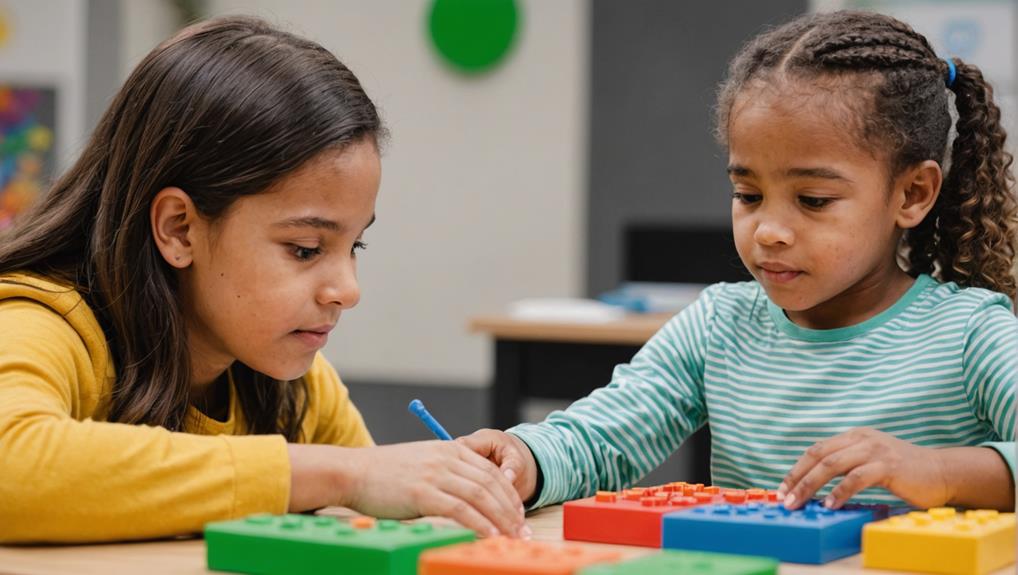
Identifying specific sensory issues in children is a crucial step taken by pediatric occupational therapists through thorough assessments. These assessments are detailed evaluations that explore a child’s sensory processing abilities. They include careful observation of responses to stimuli and in-depth collection of developmental history.
Through these assessments, therapists can pinpoint specific sensory issues, which is crucial in creating individualized therapy. This customized treatment addresses each child’s needs, ensuring the most beneficial care. Consequently, these assessments also provide a fundamental baseline for tracking progress and measuring the effectiveness of therapy.
Below is a simple table illustrating the course of action:
| Steps in Evaluation | Purpose |
|---|---|
| Observing responses to stimuli | Understand a child’s sensory processing |
| Gathering developmental history | Detail the child’s sensory development |
| Identifying specific sensory issues | Create individualized therapy |
| Developing customized treatment plans | Address distinct sensory needs |
| Tracking progress | Measure therapy effectiveness |
Through these assessments, occupational therapists shape therapy that supports children’s sensory development, enabling them to engage fully and comfortably with their surroundings.
Exploring the Seven (or Eight) Senses
While we commonly acknowledge the five senses, pioneers in occupational therapy, like A. Jean Ayres, have identified seven or even eight senses essential to understanding sensory processing disorder (SPD). This concept encompasses the traditional senses of sight, smell, taste, touch, and hearing but also integrates the internal senses of proprioception, or body awareness, and the vestibular sense, which deals with movement and balance. Recent work by Lucy Jane Miller further expands this understanding to include interoception, the sense of internal physical status.
Considering the wide range of senses affected, children with SPD may display varied behaviors such as hypersensitivity, hyposensitivity, or atypical behaviors, which can be misinterpreted as signs of ADHD. This insight emphasizes correctly identifying SPD to guarantee the correct therapeutic interventions.
In the context of SPD, these senses are crucial in informing the sensory integration process. This process helps children with sensory issues interpret and respond effectively to sensory input, enhancing their behaviors and daily functioning. Tailoring sensory techniques to balance sensory input according to each child’s specific needs is a cornerstone of effective occupational therapy for SPD.
Understanding these senses is vital for caregivers and therapists alike. This knowledge can guide therapeutic interventions and provide a foundation for empathetic, informed support, helping children with SPD navigate their world more quickly and confidently.
Balancing Sensory Inputs and Techniques
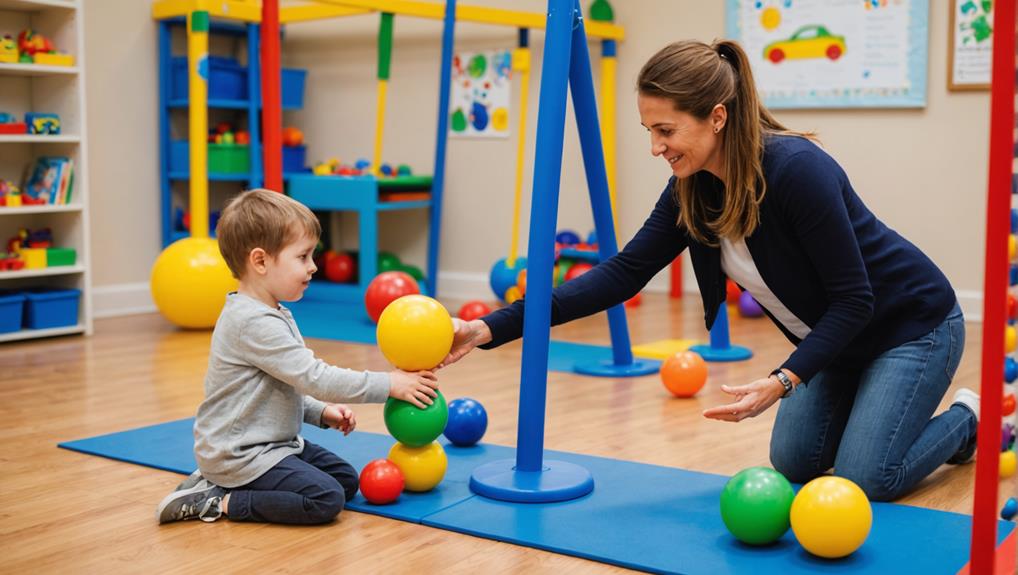
Shifting our focus from the seven or eight senses fundamental to SPD, we now explore how occupational therapists utilize different approaches to balance sensory inputs for children impacted by this condition. They prioritize addressing sensory defensiveness and cravings, which each child uniquely perceives. Evaluating these aspects allows the development of a more effective, personalized therapy plan.
This tailored approach is vital in managing SPD. Therapists use specialized equipment in a sensory gym customized to each child’s specific needs. Techniques such as swinging, spinning, and brushing are integrated to provide and regulate sensory inputs. These methods are thoughtfully selected and implemented to cater to distinct sensory processing challenges, offering children comfort and promoting their involvement in therapy.
Occupational therapists work to find a balance between sensory inputs and nurturing sensory regulation in a supportive and understanding setting. Their unwavering commitment to comprehending and addressing the complexities of SPD is proof of their dedication to serving these children. By providing them with the tools to navigate their sensory world, therapists enable these children to achieve a better quality of life.
Goals of Occupational Therapy for SPD
Despite the challenges that Sensory Processing Disorder (SPD) may present, occupational therapy’s primary aim is to cultivate automatic responses to sensory stimuli, thereby improving daily functioning for affected children. These occupational therapy goals are achieved by focusing on sensory integration, fostering self-regulation, developing adaptive skills, and promoting social participation.
Therapists help children handle unexpected sensory challenges through grading interventions and engaging in meaningful activities. This approach boosts the child’s competence and confidence in managing their sensory experiences.
Hence, occupational therapy for SPD is not merely about managing symptoms but enabling children to participate more fully and comfortably in their everyday lives. The following table details the critical goals of occupational therapy for SPD:
| Therapy Goal | Intervention | Outcome |
|---|---|---|
| Sensory Integration | Grading Interventions | Automatic Response to Sensory Stimuli |
| Self-Regulation | Adaptive Skills Training | Improved Daily Functioning |
| Social Participation | Grading Interventions | Successful Interaction in the Social Environment |
| Adaptive Skills | Sensory Integration Therapy | Manage Sensory Challenges |
These goals underscore occupational therapy’s profound impact on children’s lives, facilitating their progress toward independence and social success.
Standard Techniques in SPD Therapy
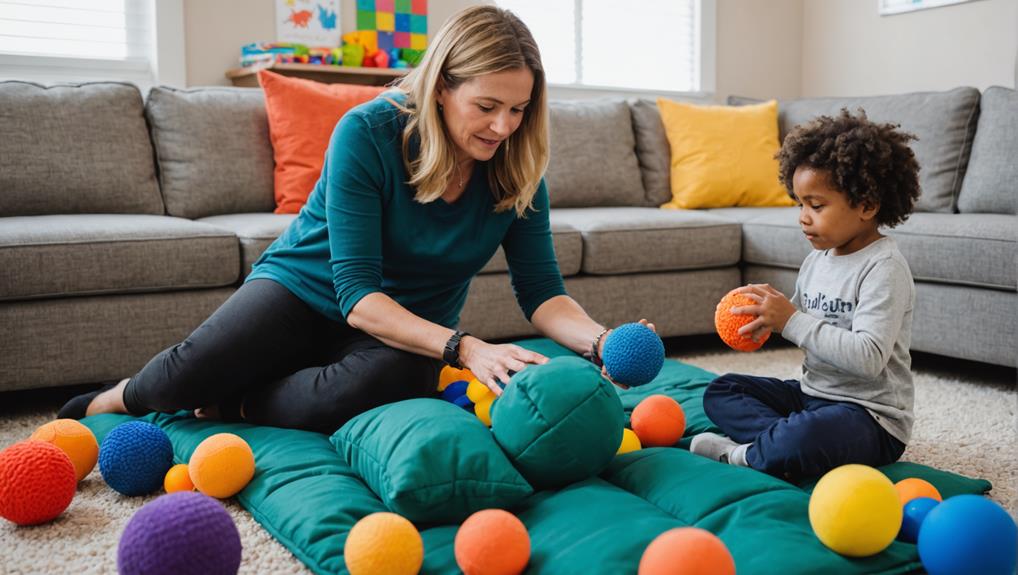
Pediatric occupational therapy for SPD regularly utilizes various methods to cater to each child’s unique sensory needs. Central to these approaches are sensory integration activities designed to help children process sensory information more efficiently. These activities are customized to each child’s specific requirements and promote better adjustment to their surroundings and diverse sensory experiences.
Deep pressure and proprioceptive input are often employed as calming methods. These methods aid children in becoming more grounded and less inundated by their sensory environments. These methods can notably diminish anxiety and enhance focus in children grappling with SPD.
Vestibular input, provided through movement challenges, is another crucial element that helps enhance balance and coordination. It’s a valuable technique for children with SPD, enriching their capacity to process motion-related information.
Tactile input, involving exposure to various touch encounters, is also integrated to assist with sensory sensitivities. It encourages children to investigate different tactile sensations in a secure and regulated manner.
Lastly, adjustments to the environment are implemented to establish a sensory-friendly space. These adaptations may involve decreasing noise levels, utilizing soothing colors, and arranging furniture in a manner that is less daunting for the child, thereby promoting more effective therapy sessions.
Home Programmes and Education
Occupational therapists play a pivotal role in establishing home plans tailored to the needs of children with Sensory Processing Disorder (SPD). These personalized plans are crafted to diminish symptoms and transform the home into a sensory-friendly setting. Discerningly acknowledging that each child’s SPD experience is distinct, therapists develop these plans with personalized strategies and activities that bolster the child’s sensory integration.
In addition to creating home plans, education is vital to the therapeutic process. Occupational therapists provide in-depth education to the child and their family, focusing on understanding SPD and its impact on daily activities and social interactions. This education is pivotal in nurturing a deeper family comprehension of SPD, enabling parents and siblings to effectively assist the child in managing their symptoms.
Occupational therapists enable families to establish a nurturing, supportive, and sensory-conscious environment through the harmonious blend of tailored home plans and robust education. This comprehensive approach alleviates the immediate challenges posed by SPD and equips the family with the knowledge and skills necessary to navigate future obstacles. The ultimate goal is to enrich the child’s ability to engage in life and flourish fluently.
Frequently Asked Questions
How do occupational therapy methods for SPD help my child?
Occupational therapy methods for SPD, like sensory integration and deep pressure techniques, are designed to improve how your child processes sensory information. These methods can enhance your child’s ability to focus, manage emotions, and participate in everyday activities.
How Do Occupational Therapists Treat Sensory Processing Disorder?
Occupational therapists treat Sensory Processing Disorder (SPD) using sensory integration therapy, customized activities, and parent-guided sensory diets at home. They tailor treatments based on evaluations of a child’s specific sensory needs for effective outcomes.
What Is the Type of Therapy Most Used With Individuals With SPD?
Occupational therapists utilize sensory integration therapy as the primary therapy for people with Sensory Processing Disorder (SPD). This customized approach regulates responses to sensory stimuli through controlled exposure and tailored activities.
What Are the Occupational Therapy Interventions for Sensory Seeking?
Occupational therapists employ sensory-seeking interventions for SPD, including swinging, jumping, deep pressure activities, and tactile experiences. These tailored methods improve self-regulation and sensory processing abilities, effectively addressing each child’s sensory needs.
What Is Sensory Stimulation Occupational Therapy?
Sensory stimulation occupational therapy utilizes tailored sensory activities to regulate individuals’ responses to stimuli. It aims to improve sensory processing capabilities and boost participation in daily activities through techniques like deep pressure input and vestibular activities.
Conclusion
In pediatric care, occupational therapists serve as dedicated gardeners, tending to the sensory needs of children with SPD. Through expert techniques and customized therapy methods, they cultivate balance in sensory inputs, enhancing daily functionality and complete quality of life. Parental involvement and education further nourish this process, creating a more harmonious sensory garden. Therefore, occupational therapy for SPD can be seen as an essential cultivation process, promoting healthier growth and development in children.

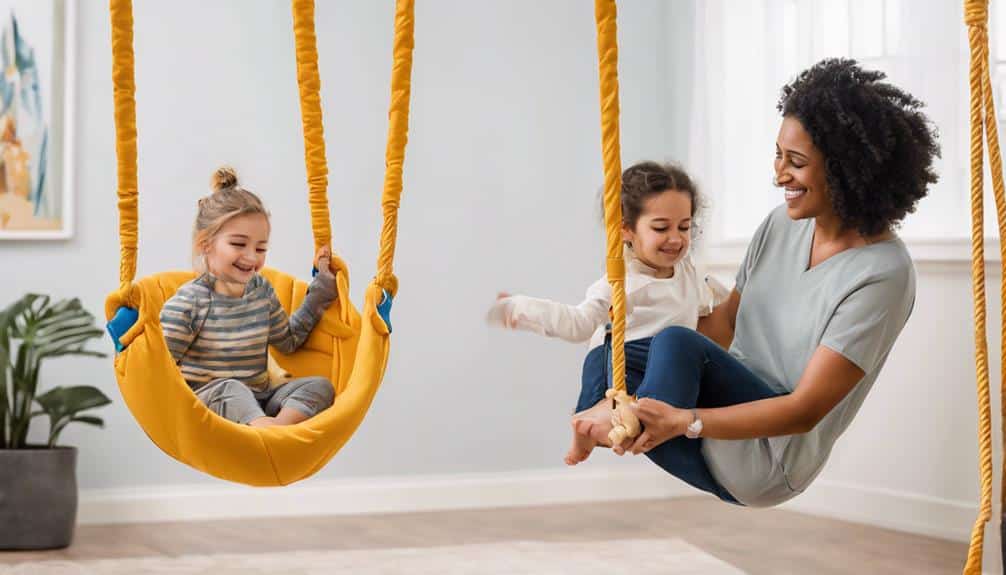
Recent Comments